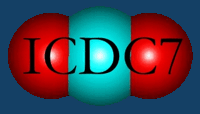Re: Atmospheric CO2, Carbon Isotopes, the Sun, and Climate Change over the Last Mill (Score 1)
by Harro.Meijer on Thursday, September 29 @ 23:11:53 MDT | | The evidence, or at least firm indication, that you present that solar
influence on the recent "little ice age" climate change is minimal, is very
interesting. As you might be aware of, in paleo-ecological circles this
solar influence is heavily debated. There is, namely, overwhelming
circumstantial evidence that solar forcing - through an unknown
mechanism - plays an important role in a number of holocene climate
changes, as e.g. peat bogs all over Europe register a coincidence of
sharp climate change and sharp changes in 14C.
I give you here a number of references to work by van Geel and others
(using the Groningen AMS facility) that describe these coincidences,
both in the little ice age, and around 800 BC.
It would be interesting to confront these authors with your model
outcome; furthermore it would be interesting to see whether you could
tackle the 800 BC event with your model.
Some references by van Geel et al, for your consideration:
B. van Geel, O.M. Raspopov, H. Renssen, J. van der Plicht,V.A.
Dergachev, and H.A.J. Meijer, The role of solar forcing upon climate
change. Quaternary Science Reviews 18, 331-338 (1999).
B. van Geel, J. van der Plicht, M.R. Kilian, E.R. Klaver, J.H.M.
Kouwenberg,, H. Renssen, I. Reynaud-Farrera, and H.T. Waterbolk, The
sharp rise of D14C ca. 800 cal BC: possible causes, related climatic
connections and the impact on human environments. In: Proceedings, 16th
International Radiocarbon Conference, W.G. Mook and J. van der Plicht
(eds.). Radiocarbon 40 (1), 535-550 (1998).
B. van Geel, H. Renssen, and J. van der Plicht, Paleo-evidence for
solar forcing of climate change. Proc. of 3rd Workshop of the European
Lake Drilling Programme ELDP on Mediterranean Lacustrine Records, 14-18
October 1998. Terra Nostra 6, 40-45 (1998).
H. Renssen, B. van Geel, J. van der Plicht, M. Magny, Reduced solar
activity as a trigger for the start of the Younger Dryas? Quaternary
International 68-71, 373-383 (2000).
O. Raspopov, O. Shumilov, V. Kochegura, V. Dergachev, B. van Geel, J.
van der Plicht, H. Renssen, J. and Maley, Dendrochronological and
other proxy evidence for climatic colling around 2700 BP and its
heliogeophysical forcing. In: Proceedings of the International
Conference "Dendrochrology and Environmental trends. Stravinskiene, V.
and Juknys R. (eds.), Kaunas, Lithuania, 17-21 June 1998. 113-123
(2000).
O.M.Raspopov, O.I.Shumilov, V.A.Dergachev, B.van Geel, N.A.Morner,
J.van der Plicht and H.Renssen, Abrupt climatic change around 2700-2800
years BP as an example of existence of 2400 year periodicity in solar
activity and solar variability. Proceedings, First Solar and Space
Weather Euroconference, Tenerife, Spain, 25-29 september 2000, 513-515
(2000).
B. Van Geel, H. Renssen, and J. van der Plicht, Evidence from the past:
solar forcing of climate change by way of cosmic rays and/or by solar
UV? Proceedings Workshop on Ion-Aerosol-Cloud Interactions, Geneva,,
ed. J. Kirby, CERN 2001-007, 24-29 (2001).
D. Mauquoy, B. van Geel, M. Blaauw, and J. van der Plicht. Evidence
from northwest European bogs shows "Little Ice Age" climatic changes
driven by variations in solar activity. The Holocene 12 (1) 1-6 (2002).
A. Speranza, B. van Geel, and J. van der Plicht. Evidence for solar
forcing of climate change at ca. 850 cal BC from a Czech peat sequence.
Global and Planetary Change 35, 51-65 (2002).
van Geel, B., Raspopov, O.M., van der Plicht, J., Renssen, H., 1998.
Solar forcing of abrupt climate change around 850 calendar years BC.
in: Natural Catastrophes During Bronze Age Civilisations.
Archaeological, Geological, Astronomical and Cultural perspectives.
B.J. Peiser, T. Palmer and M.E. Bailey (eds.), BAR International Series
728, Archaeopresse, Oxford, pp. 162-168.
M. Mauquoy, B. van Geel, M. Blaauw, J. van der Plicht, and F. Berendse,
North-West European bogs show that Little Ice Age climate changes may
have been driven by changes in solar activity. Change 59,
October-November, 14-16 (2001).
D. Mauquoy, B. van Geel, M. Blaauw, J. van der Plicht. Evidence from
the North-West European bogs showing that the Little Ice Age climatic
changes were driven by changes in solar activity. In: H. van Oene et
al., Long-Term Effects of Climate Change on Biodiversity and Ecosystem
Processes. Dutch National Research Programme on Global Air Pollution
and Climate Change, Report no. 410-200-089, RIVM, p. 155-169 (2001). |
] |
|










